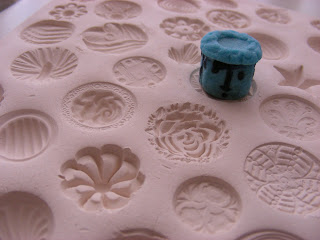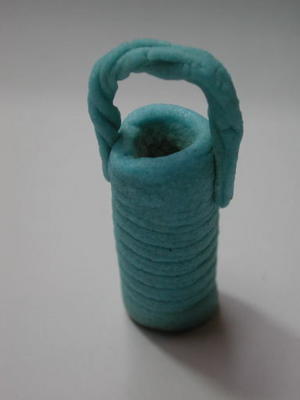Simplest Mould, Drop Out Mold
 The Potter's Dictionary of Materials and Technique by Frank and Janet Hamer recently came into my possession. It's a British publication. It is astounding how many pottery terms have different meanings. There may be a language barrier. I did get the feeling that Mould is used rather than Mold. You must forgive me if I used the two interchangeably here.
The Potter's Dictionary of Materials and Technique by Frank and Janet Hamer recently came into my possession. It's a British publication. It is astounding how many pottery terms have different meanings. There may be a language barrier. I did get the feeling that Mould is used rather than Mold. You must forgive me if I used the two interchangeably here.There are many different types of molds for clay material as well is different materials for making them. I'll begin with the simplest, that is a clay mold.
Starting with a rather thick slab of porcelain, pushing in a borrowed antique button collection this Mould was generated. It's just that simple to make a mold. This slab is bisque fired to cone 04 or 1800°F/1000°C.
Using it is an uncomplicated operation of taking a small ball of Egyptian paste and smash it in to the depression. Egyptian paste comes out rather easily until the mold becomes water saturated. Once the mould is water logged you may either set it aside to dry or dust it was a little cornstarch or rice flour to aid as a release agent.
In the image to the right shows a small slab of clay in which a screw was impressed. After being dried it was fired to approximately 1000°C. A small coil of Egyptian Paste was pressed into this form/mold and released. A straw was used to place a hole in the top of coil forming these beads. Pretty simple, eh?
Labels: mould for beads



































